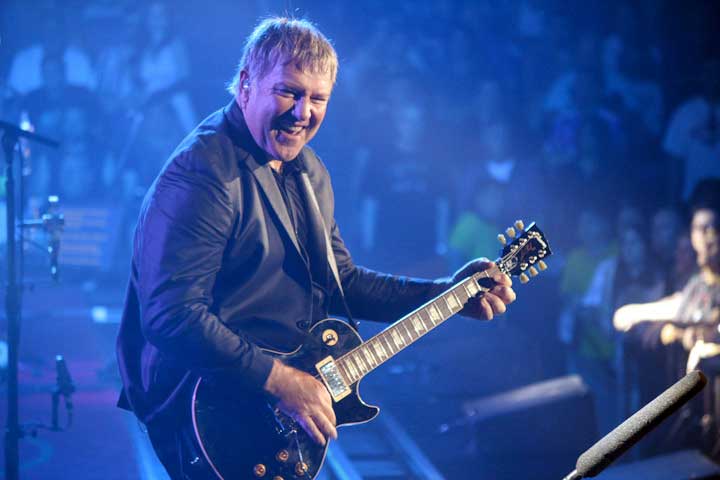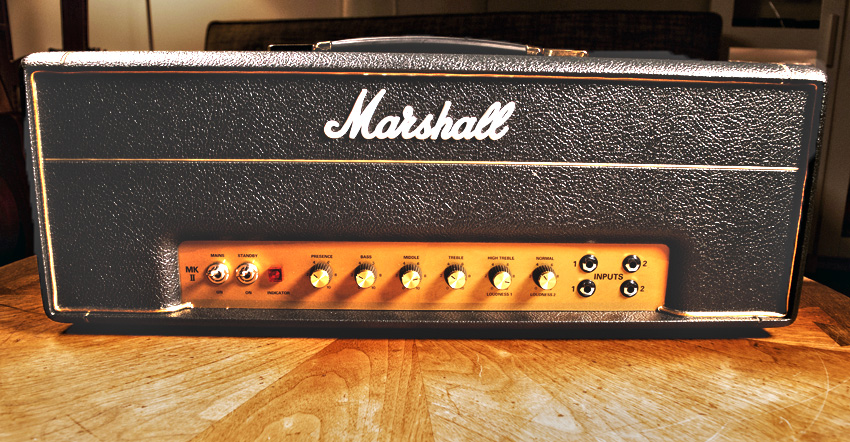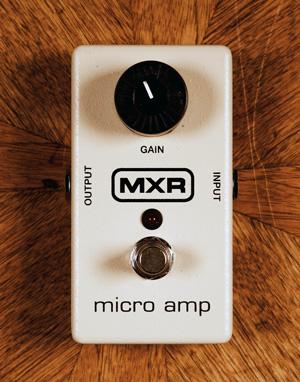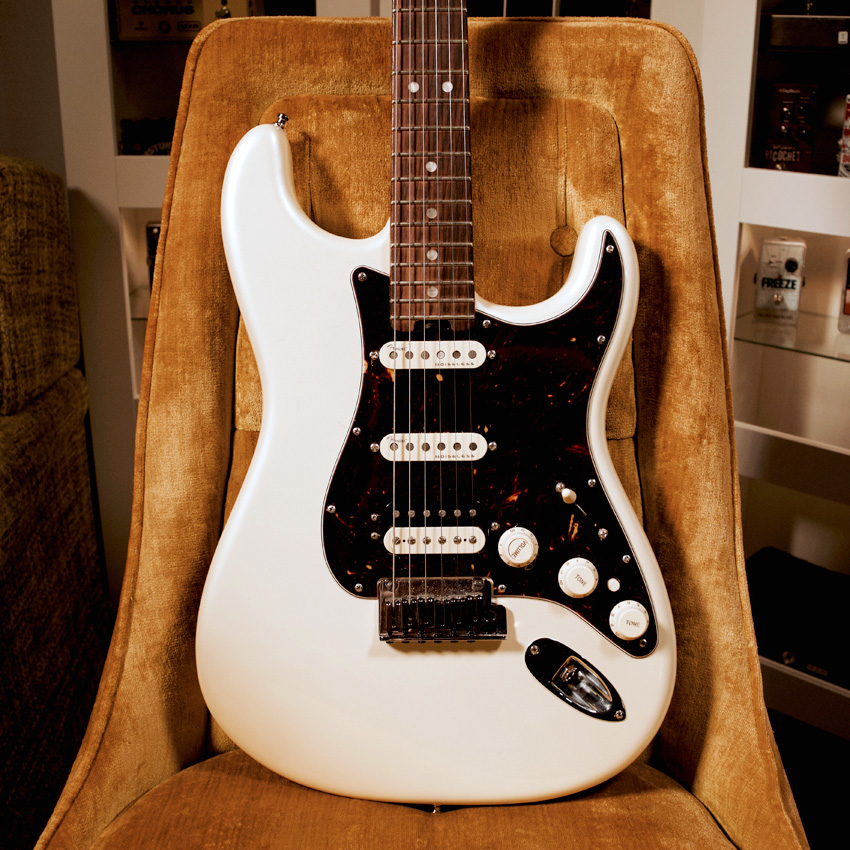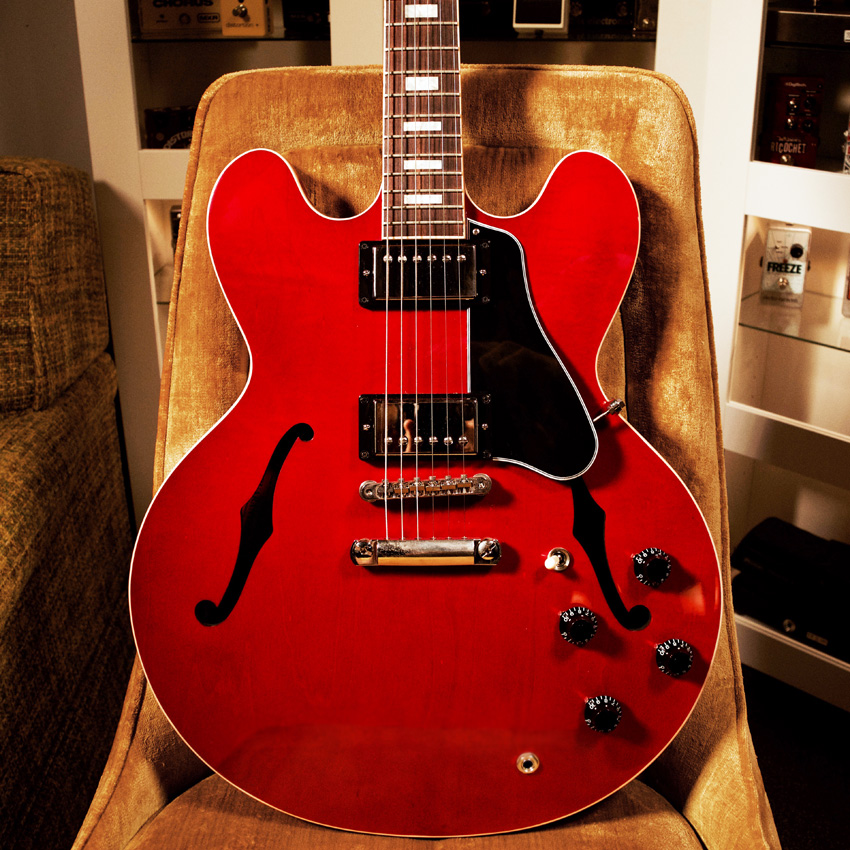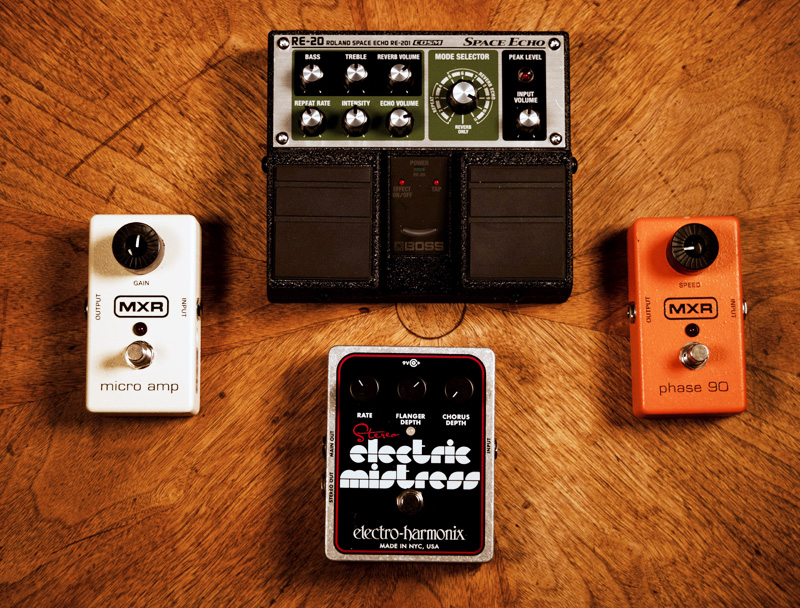This month’s Legends of Tone feature is very near and dear to me, because of who we are showcasing: Alex Lifeson of Rush. Lifeson is such an important figure in my life in regards to music, in fact, I wouldn’t be here if it wasn’t for his music and guitar playing. Simply put, I started playing the guitar because of Alex Lifeson. As a ten-year-old kid, I loved rock music, but once I found my dad’s old beat-up cassette of the Rush album Moving Pictures I thought I heard something special.
I couldn’t believe the sounds I heard on that record – but that guitar. I combed through more Rush albums and found the live Exit…Stage Left, and All The World’s a Stage albums and again was enthralled by the licks and solos. I had never before in my life heard a guitar do those things before. The following year, my uncle would surprise me with my first guitar and an old Fender amp and I never looked back.
It’s not just me though – Rush has been nominated for 7 different Grammy Awards, 6 of which were for Best Rock Instrumental Performance, as well as 9 Juno awards including Artist of the Decade (’80s). The personal accolades for bassist Geddy Lee and Drummer Neil Peart are far too numerous to include here. Needless to say, Rush are an important historical band and opened the doors for progressive rock in a way few bands of that genre ever were able to achieve.
When I got the news that Lifeson would be our next feature, we decided that something special should be done for our video. We felt a Top 5 Alex Lifeson Solos video was most appropriate to give him the homage that I felt he deserved (and how could I pick just one Rush song?). I compiled my own personally curated list of the 5 guitar solos I felt best showcased Lifeson’s incredible range as a player and his unmistakeable musicianship. Without further ado…
5. “2112 – Part 1. Overture” – 2112 (1976)
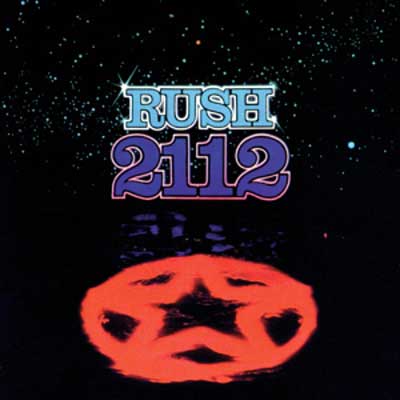
1976’s 2112
The epic song that is 2112 is something to behold — a huge entire side of an album in length and broken up into several sections. Its story is classic science fiction in nature, and a landmark turning point in the Rush catalogue. The album was a rebellion against the record label’s attempt to control their musical content when they began veering too far in the “progressive” rock direction. Their answer to that was making their longest song yet, and it was a great success amongst Rush fans.
The first and second portions of the track are undeniable radio classics, played plenty even today. I’d like to focus on the first portion of the song, “Overture,” because of its absolutely brilliant solo. It is quite a short one, but it manages to provide a lot of emotive energy to this song’s opener. Lifeson is in rare form, with wide vibrato, expressive runs and usage of the blues scale in very un-bluesy ways. What really strikes me about this one though, is how he phrases his licks – they are a big reminder as to how much of an influence Jimmy Page was to Lifeson at this period in time. Even his tone stands out as biting and nasally in all the right ways.
We heard what appeared to be a particularly Marshall-y sound for this one, though Lifeson likely used combinations of a Marshall, a Fender Twin Reverb, and a Fender Super Reverb during this time period. We decided to go with our Marshall 1987XL Plexi head and our trusty Gibson ES-335 to get the tone. For added sustain and grit we used an MXR Micro Amp to juice our signal a bit to get it where we wanted it to go.
This was a really fun solo to perform, but getting it right boiled down to the tiny minutia to make it work. The bends needed to be inflected just so and so, and the vibrato was much wider than I normally notice players use, but all of these factors combined to make this a truly melodic, yet gritty solo. It always felt like it came from a genuine place, and I found it to be a great choice for the start of my Top 5 list.
Fun Fact: the entire 2112 Suite would not be recorded live until 1998’s album Different Stages. The first two discs were recorded live in my hometown of Tinley Park, Illinois!
4. “YYZ” – Moving Pictures (1981)
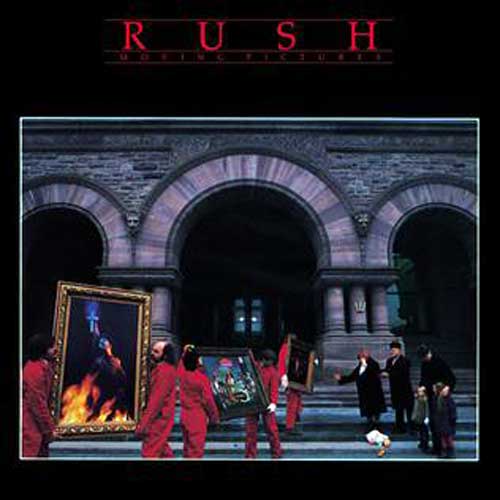
1981’s Moving Pictures
“YYZ” is a classic for a million reasons and no, not just because of Guitar Hero! It is one of the earliest completely instrumental Rush tracks on record, appearing on 1981’s Moving Pictures. Not only that, but it was the first Rush track to be nominated for a Grammy for Best Rock Instrumental Performance that same year.
Compositionally, the track is comprised of several distinct sections that follow, more or less, the basic pop song format (Intro -> Verse -> Chorus -> Solo -> Verse -> Chorus), which makes it surprisingly accessible for an instrumental track regardless of its obvious complexity. As much as I would’ve loved to have included the famous YYZ morse code intro or the great verse and chorus riffs, we ultimately chose to start our video right on the epic drum break that leads into the guitar solo.
Musically speaking, the solo revolves around a simple harmonic motif of a B Major chord for two measures, moving to a C Major chord for two measures. This lack of chord movement opens up the solo section for both Geddy Lee and Alex Lifeson to explore more within it. Take note of Lee’s incredible bassline, replete with funky Motown-esque movement and clever usage of bass “licks.” You’ll notice that when Lifeson ends a solo phrase, Lee will fill in the empty space with those bass fills, perfectly making sure no moment is left unfilled during the solo. This is a fine example of how well Rush utilizes their trio format to get the most sound possible.
As for the guitar solo, Lifeson capitalizes upon the chords with exclusively E harmonic minor licks, which give it a unique sound. He had this to say about it:
“The solo to “YYZ” is quite different; it has an almost ethnic sound. There, I’m responding to the background, which, to me, suggested something reminiscent of a Middle Eastern scene. Who knows, it may be the influence of listening to Yugoslavian music as a child creeping into a Rush song.”
The break lick before the (massive!) keyboard entrance is one of my all-time favorite Lifeson moments, and I remember it absolutely captivating me whenever I heard it as a kid. The solo is a kind of two-pronged experience all the way through – its beginning is slithering and snarling, while it closes with a very singable ending that brings it all back home again. Overall it is a great solo, and showcases how Lifeson can morph between styles and really play to the music effectively.
To help achieve the proper sound, we used the classic early Rush setup for this one again, which included the Gibson ES-335 and our Marshall 1987XL Plexi head being driven by an MXR Micro Amp. Now, I was going to use our Strat for its whammy bar, which is used on the original, but I realized that I could manipulate the strings with bends to cleverly imitate it without needing to resort to it. We preferred the tone we got with the Gibson for this solo and ultimately were happy with the results. Besides, Lifeson actually removed the bridge pickups of his Stratocasters and would replace them with Gibson PAF humbuckers anyways.
3. “The Spirit of Radio” – Permanent Waves (1980)
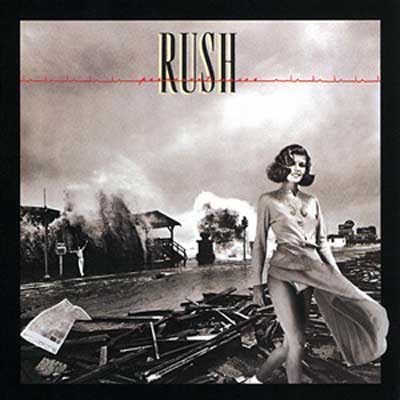
1980’s Permanent Waves
“The Spirit of Radio” marked a significant change of course for Rush when it was released in 1980. That track, and the other single from the album, “Freewill” attracted much commercial radio attention and helped Permanent Waves to become Rush’s first US top 5 album, eventually making it all the way to #4 on the Billboard 200 charts. This song also showcased Rush’s early foray into including more reggae-influenced sections in their music, which while polarizing to some, I am certainly a fan of.
Be that as it may, both songs contain absolutely ripping guitar solos, with “The Spirit of Radio” making it into my list at #3. I simply cannot overlook how incredibly tasty this solo is. But what really makes it a favorite of mine is that it contains some of the most sheer attitude of any Lifeson solo I know. It’s also the shortest solo on my list, which in my opinion makes it stand out even more – just when you start settling into it, it’s already over and gone.
For our gear, we turned to a Fender American Elite HSS Shawbucker Strat and our Marshall Plexi again for the rhythm and lead parts. A Fender ’68 Custom Vibrolux Reverb was used for the clean reggae-styled section before the solo. Per usual, we juiced the Marshall with our trusty Micro Amp pedal to get it to growl a little bit harder and to accentuate the filter of the wah pedal which followed it in our signal chain.
Speaking of which, Lifeson makes excellent usage of his wah pedal here, accentuating his bends and phrasing at key points during the solo. The whammy bar pre-dive with the slow climb of the strings back to tension creates an awesome tension and release effect (no pun intended) that leads perfectly into the last phrase of the solo. I am always left wanting more after I hear it, because it’s another solo that just feels like it is pure, unadulterated Lifeson at play again.
I felt that among our five recordings, “The Spirit of Radio” turned out to be the most tonally and stylistically accurate to the original album version, especially after we cross-compared the two side-by-side. Overall, it’s a pretty exemplary Rush song despite it being one of their most radio-friendly songs. They really found a way to satisfy their own creative curiosities while making the song’s structure more digestible to the average listener. Pure genius, if you ask me.
2. “Tom Sawyer” – Moving Pictures (1981)
This is easily the most famous song in Rush’s catalog, which helped raise Moving Pictures to the legendary status that it holds today. If I could, I’d include every solo from the record on this list but alas, choosing only 5 of them will have to do. The solo on “Tom Sawyer” though, is pretty special because it is actually played in a 7/4 time signature, but it’s done in such a way that it doesn’t overtly feel to like it’s in an odd meter. It’s certainly not easy to rhythmically count out when playing due to the stellar work of Neil Peart and Geddy Lee. Lifeson himself would surely agree that the solo wasn’t thought out in a purely logically based approach either:
“My strongest work is the spontaneous stuff, and I try so hard not to think when I’m playing, particularly solos. When I get analytic, I lose my sense of direction and get too focused on details and sections. The key to my soloing is to let my heart take over; I close my eyes and hope that my fingers land in the right spot.”
– Alex Lifeson, 1996, Guitar One Magazine, Volume 5 Number 34
He also had this to say about the recording of this classic solo:
“The guitar solo is pretty quirky, but I don’t think it took long to do, maybe five or six takes. With solos, I don’t like to be too prepared going in – I like to surprise myself. This might have been a comp of a few takes.”
– Alex Lifeson, 2011, MusicRadar
To my ears, it sure sounds like he had a plan for that solo upon listening to it, and I was definitely surprised to hear that it might’ve been a composite of different takes. The solo just works, plain and simple, and I can’t help but sing along to every note of it when it’s on. This is the mark of a truly great solo. It has a looseness to it that is refreshing, but that doesn’t mean it ever comes across as sloppy or misguided. It merely has a lot of “feel” to it that works excellently over the background parts. Take note of his awesome usage of pinch harmonics throughout the solo – Lifeson doesn’t get enough credit for his utilization of them (as early as 1973 on record). Top it all off with a quick bar or two of shredding and voilà – that’s a solo!
1. “Freewill” – Permanent Waves (1980)
This brings us to my list-topping, number one personal favorite solo – Freewill. It’s hard to wrap my brain around this solo after all of these years (and even after I dissected it to bits too!), but it’s clear why once you hear it: it is legendary.
As it turns out, Lifeson agrees with me too. in 2009, he said in an interview with MusicRadar that he felt his Freewill solo made his personal Top 3 solos list:
“It’s a really hard solo to play. I think I feel a certain amount of pride in that fact alone. Every time I play it, I’m amazed I got through it. It’s so frenetic and exciting. The rhythm section too – Geddy and Neil are all over the place. It’s probably one of the most ambitious pieces of music Rush has ever done. “
– Alex Lifeson, 2009, MusicRadar
The solo is great for a few personal reasons: it starts strong and a little humorous with Lifeson’s practically whining whammy bar articulations and quickly builds from there into a very singable (a theme of his) section full of pinch harmonics and tasteful bending. After another dosage of those groaning whammy tricks he bursts into an utterly relentless flurry of frantic shred that nearly always makes my hair stand up on edge. He cleverly engages a phaser for this section that really accentuates some of his barrages of notes, while causing a sort of mushing of a lot of the others together as the phaser sweeps to the other darker end of the spectrum. It creates a great “illusion” of sorts that makes the solo sound so characteristic and fascinating to me.
What’s more, the solo pans slowly from side to side during that section as well – something I failed to even notice even after years of listening to it! Lifeson also recorded a great rhythm track for the end of the solo to which he plays call and response with to great effect. It’s a back and forth interjection of classic licks that really helps complete the solo for me as something special. As if that wasn’t enough, he used a delay effect during the solo in a clever way: the feedback control was set low so there was only a few repeats heard in total so it didn’t muddy up the solo when it gets busier. We added a Boss RE-20 Space Echo Delay Pedal to our chain, which is a recreation of the famous Roland RE-201 Space Echo unit, and used it to place the final touches on this dense solo. There is a lot more going on here than you may initially think, and that’s why I ultimately settled on this solo to be my top Lifeson moment.
Check out our video at the top of the page to see and hear our direct replications of these classic guitar solos!

